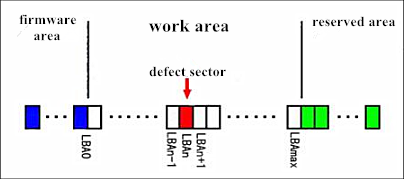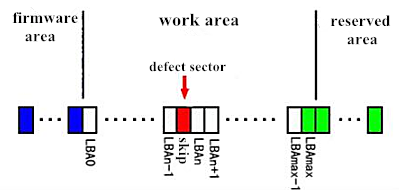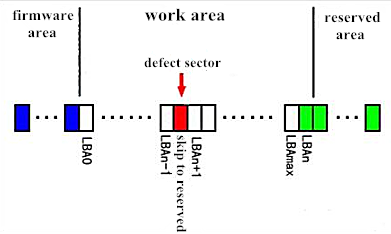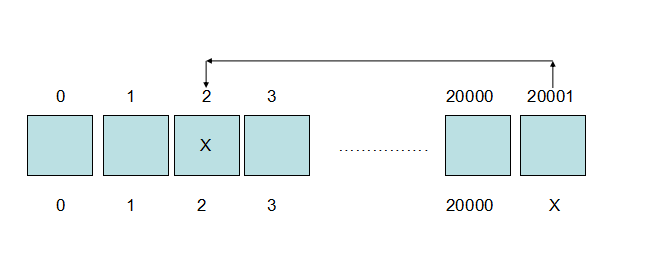Analysis of Seagate Sector Access Interruption
|
When referring to LBA change, then we must talk about defect lists. We know that hard disk' data storage is with high density, so it is inevitable to make some defect sectors during its production process. What's more, those unstable sectors will gradually aging and will cause data read & write error, then they will turn into defect sectors. These defects and unstable sectors will seriously threaten hard drive's data security. And in order to protect the data, hard disk manufactures have designed P-list and G-list to deal with those defect sectors, and these two defect lists will be used to record statuses of defect sectors. P-list is also known as permanent defect list, it is used to record the defects generated during production. After a defect sector is being added to P-list, disk will no longer read or write this sector, but to read and write the next following sector. This operation will change LBA values of all the following sectors, and one sector from reserved area will become LBAmax of the disk.
G-list is also known as grown defect list, it is used to record the defects caused by magnetic media die-down during the usage. After a defect sector is being added to G-list, and when disk needs to read or write this defect sector, a sector from reserved area will be relocated and replace that defect sector, so there wont be any influence on other sectors in working area. As shown in the picture:
That is to say, if the change of a defect list can lead to the change of LBA value, then ECC value will also be changed, thus resulting in UNC error. This is why when defect list of one Seagate disk is broken will lead to translator disorder, which will result in a situation that scanning can normally read out the data from sector 0 to a specific sector, but from that specific sector to the end, all the sectors are unable to get the data with errors of ERR and UNC. But we should noted that not all defect lists can lead to the change of LBA value. Only a "dig" list can lead to LBA change, while "replace" list wont affect LBA value at all, this is the example pic of a "dig" list:
This is the example pic of a "replace" list:
Combining with the above two pics and illustrative pics of P-list and G-list, we can find that the so called "dig" list actually means from the next following sector of the "dug" sector, all subsequent sectors will change their LBA value. While "replace" list means an available sector will be used to replace the defect sector, and all subsequent sectors of the defect sector wont change their LBA value. Comprehensive defect list is a major component of the translator, and the comprehensive defect list contains the following defect lists: V1: slip list of working area (equivalent to collection of V10 and V40) In Seagate drives, both V40 and P-list belong to "dig" list. That is to say, V40 and P-list can lead to "sector access interruption". And we should know that both adding and missing entries in defect list can result in defect list change. So there are four detailed reasons for Seagate "sector access interruption" problem as we've mentioned, four detailed reasons are: 1. Entry missing in V40 (there are lost entries in non-resident G-list) Summary: Entry missing and entry redundant in both V40 and V10 will lead to "sector access interruption" in Seagate drives. Common reasons why there are lost entries or extra entries in V40 and V10 can be summarized as the following three: 1. There are errors within interior firmwares Generally if it is a first hand disk, then reason 1 owns first priority; if it is a second hand disk, then reason 2 or reason 3 owns more possibilities. The above all are the contents of analysis on "sector access interruption" of Seagate drives, thanks for your reading. |






